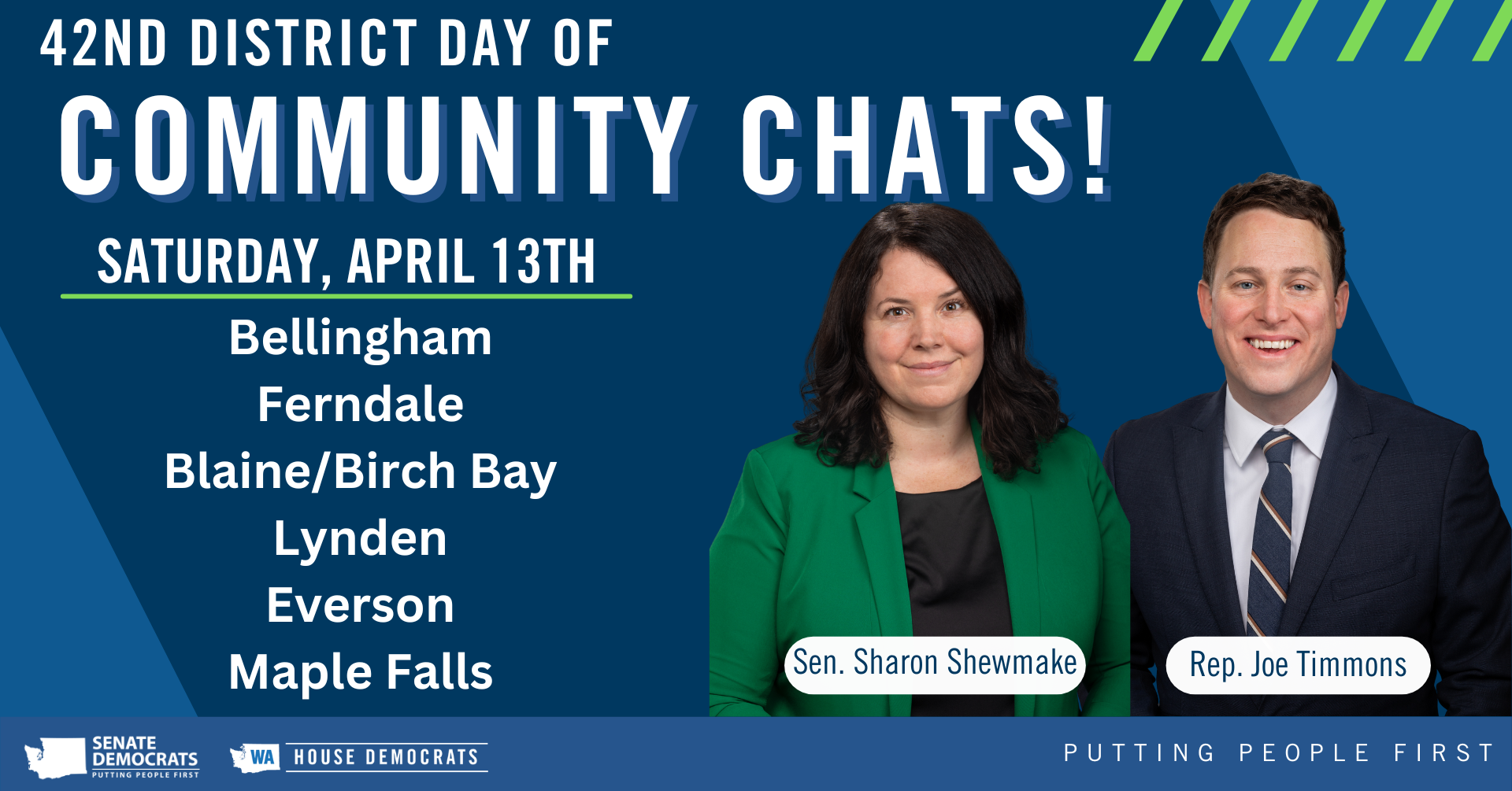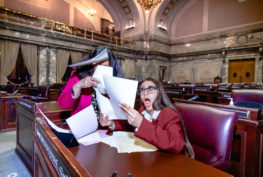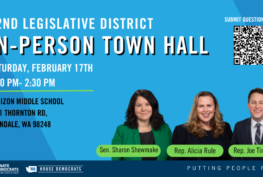Dear friends and neighbors,
As a parent, a legislator, and someone who cares about our future, I want to talk about something on a lot of parents’ minds — school funding. Be warned, because this is a long email, but I hope you’ll find it useful.
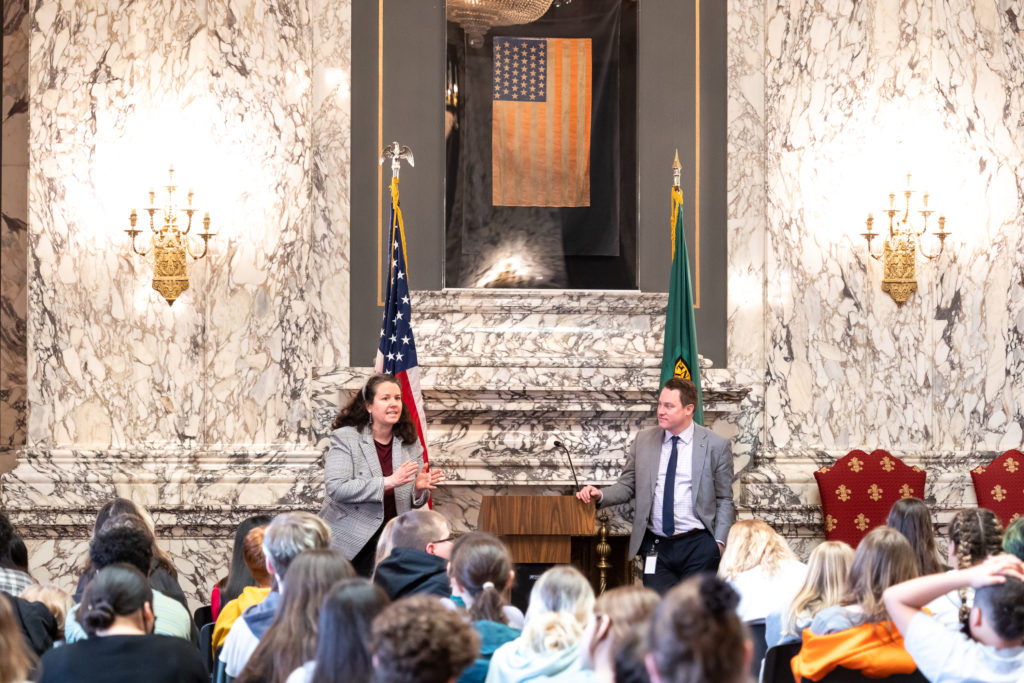 My seatmate Rep. Joe Timmons and I got to speak with students visiting from Blaine Middle School earlier this week. Fun!
My seatmate Rep. Joe Timmons and I got to speak with students visiting from Blaine Middle School earlier this week. Fun!
What’s going on?
Public schools are funded with a mix of federal, state, and local dollars, with state dollars being the largest source for most districts. In the Bellingham School District’s budget, more than 65% of total operating dollars come from the state. Schools are also the largest part of the state’s budget – more than 50% of everything we spend goes to education.
The “prototypical school model” is how our school defines basic education and determine how funding is allocated across districts. The model is a formula for how many classrooms, busses, teachers, school nurses, custodians, etc. the state thinks a school will need, with some adjustments for things like special education and students with other special needs. It’s up to the individual districts to figure out how to allocate that funding and whether to ask voters for enrichment levies.
A large driver of funding is the number of students enrolled. The basic idea is, the more students you have (and the more students with higher needs you have), the more money you get. Fewer students means less money. And right now, a lot of school districts are seeing enrollment decreases. That’s one source of school budgeting woes – the others are decreasing federal dollars, inflation, and cost-of-living.
In the last three years, Washington schools received about $2.6 billion in extra, one-time COVID relief money from the federal government — money that we’re not getting anymore. Many school districts started innovative programs to serve their students, but the funding for these programs came from a one-time source, so these districts are worried about how to continue funding these programs.
Another piece of the school funding puzzle is the effect of inflation in prices. It costs districts more money this year to buy the same stuff that they bought two or three years ago. Staff are getting cost-of-living salary increases, and overall, costs are going up.
Lastly, there have been big debates on how to account for different costs of housing across the state. It’s a lot more expensive to live in Bellevue than Sunnyside, and teacher salaries need to be competitive across our state. Several years ago, before I was in the legislature, our state began the process of reforming cost-of-living payments by region, and this is the first year those funding levels are being adjusted. We are still debating how this will shake out, but some districts in Whatcom will do better with the new formula, while others may do worse. In a normal year it wouldn’t matter too much, but with all these changes in school funding happening at the same time, it’s a lot for school districts to manage.
Together, these are putting pressure on district’s budgets, which is why they are raising concerns about the need for additional help from the state.
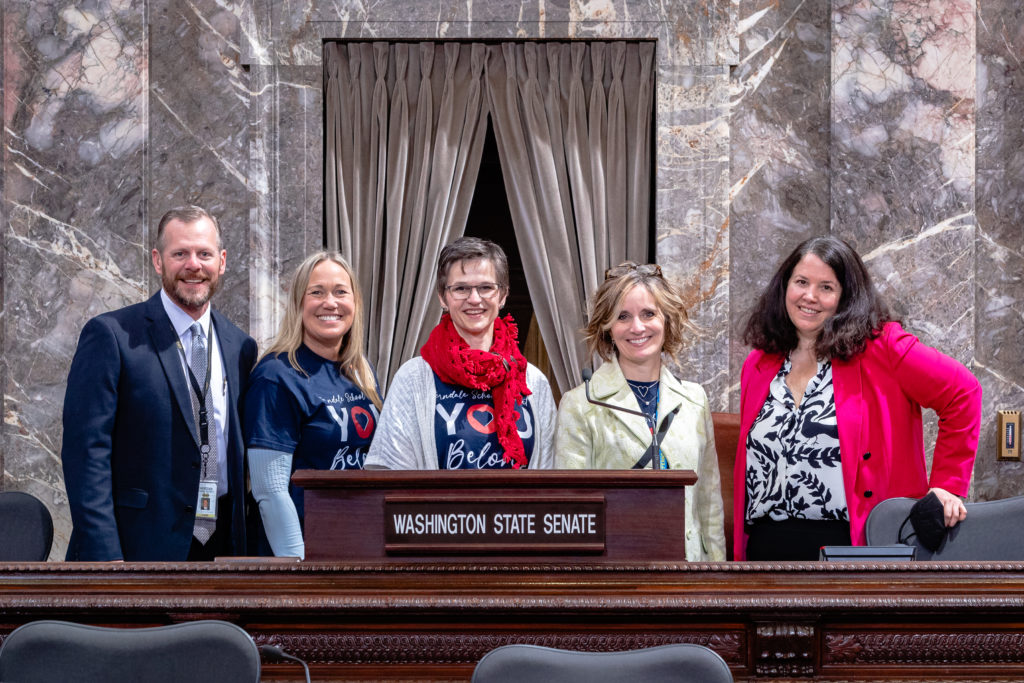
Folks from Ferndale and Meridian School districts came down earlier in the session to lobby on school funding
What is the legislature doing about it?
This year, we’re going to make the biggest increase in state funding for education in years — the final budget agreement is still in its last few days of negotiation, but our Senate proposal had $2.9 billion in new money for schools. Additional legislation to provide state funding for cost-of-living raises for teachers and school staff has already passed both chambers and been signed by the governor.
Our Senate budget proposal also had nearly half a billion dollars specifically earmarked for special education — one of the most important investments we need to make. Special education is a fundamental and baseline education service that the state should be paying for. However, the state has not been meeting this obligation. How it’s supposed to work is that the state pays for all the basic, essential services that every school district needs, so that local school levies can pay for things like music, nurses, after-school tutoring, and sports. Instead, local levies fill in gaps in special education costs when the state doesn’t sufficient fund special education.
Our intention is that this increase in funding should help schools balance their budgets so students can get the great education, and the enrichment, they deserve. The budget is still being negotiated and there will be some changes, some of them may be unpopular, but know that I am committed to continuing to work on education funding.
I’ve spoken in the past about the need to ensure we build an economy that works for everyone, and a foundational piece of that is a top-notch education for every child, paid for by a tax system that doesn’t fall so much on working people. Even if you went to private schools and don’t have kids, our K-12 system benefits you, by training the workforce for tomorrow. That is why I voted for a capital gains excise tax on profits from stocks over $250,000 to fund education, recently upheld as constitutional by the Supreme Court. My promise to you is that I will continue to work on tax fairness, not because I love paying taxes, but because taxes pay for the most important asset our society has— public safety, a social safety net, and opportunity for every child, because education is the key to unlocking the talents and dreams of our people. Communities that value and fund education have higher life expectancies, higher incomes, and higher quality of life.
Do you have thoughts and concerns? Let me know! You can reach me any time at Sharon.Shewmake@leg.wa.gov, and your input is always valuable. Thanks for reading, and I look forward to being in touch!

Sen. Sharon Shewmake

